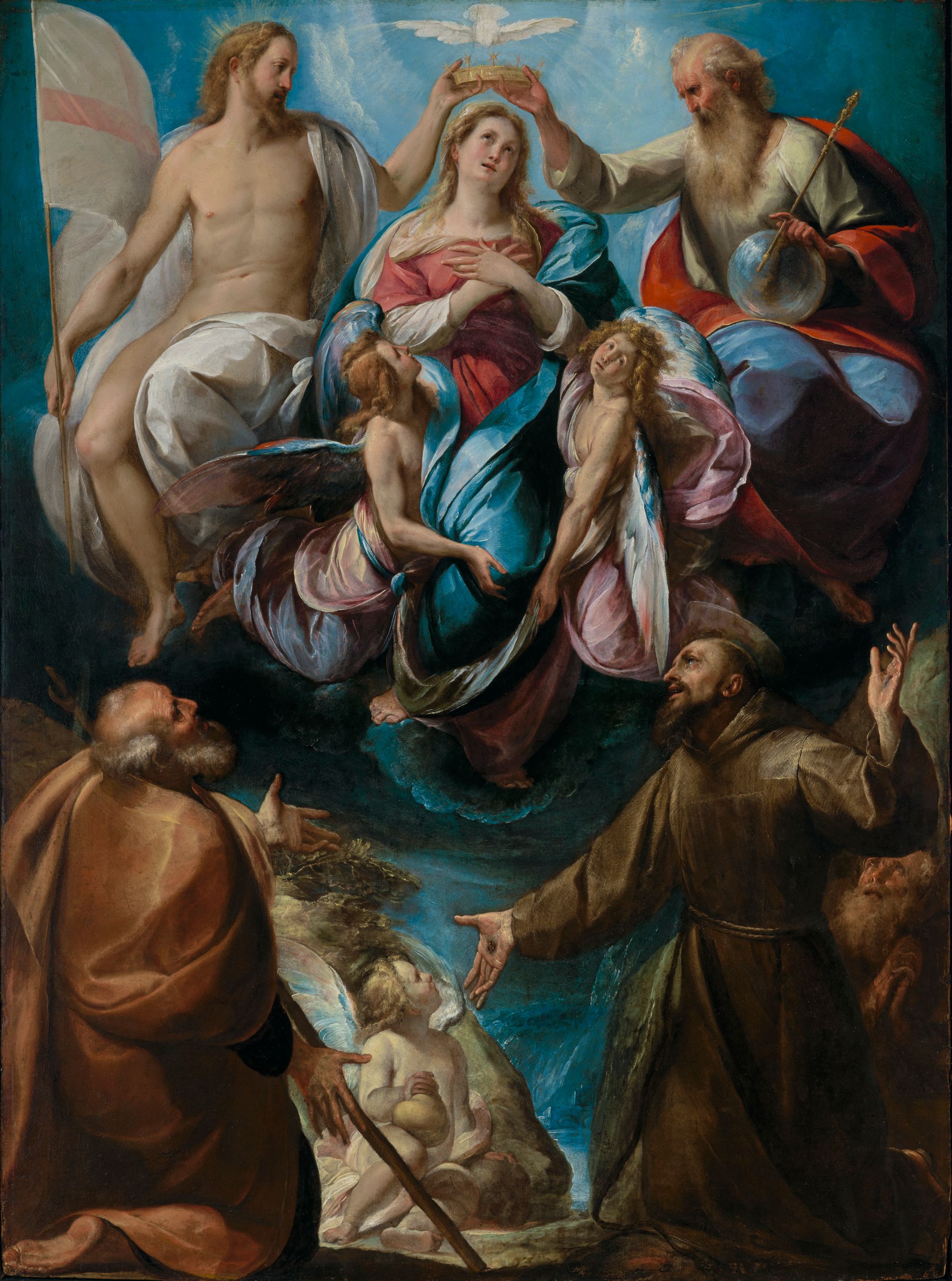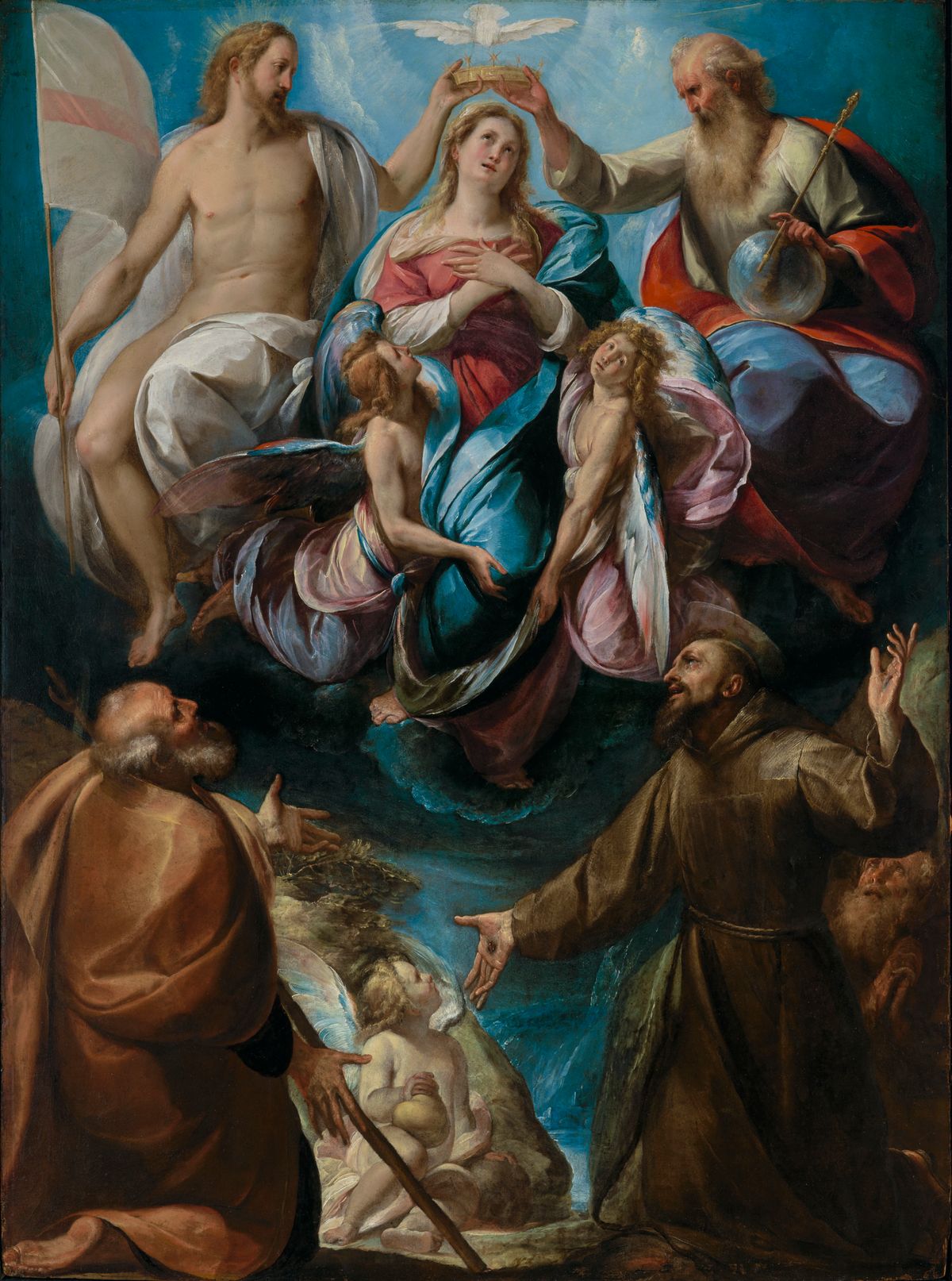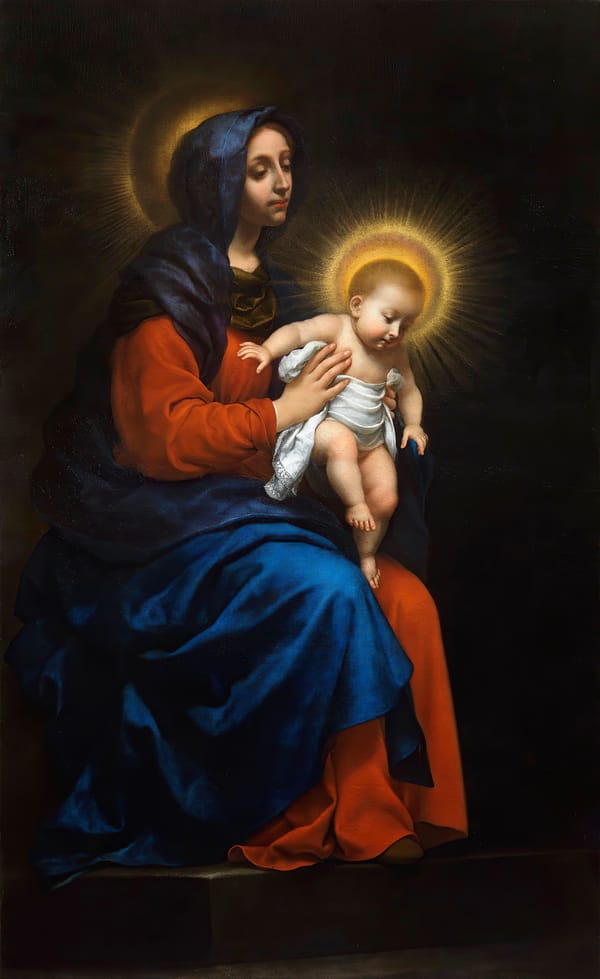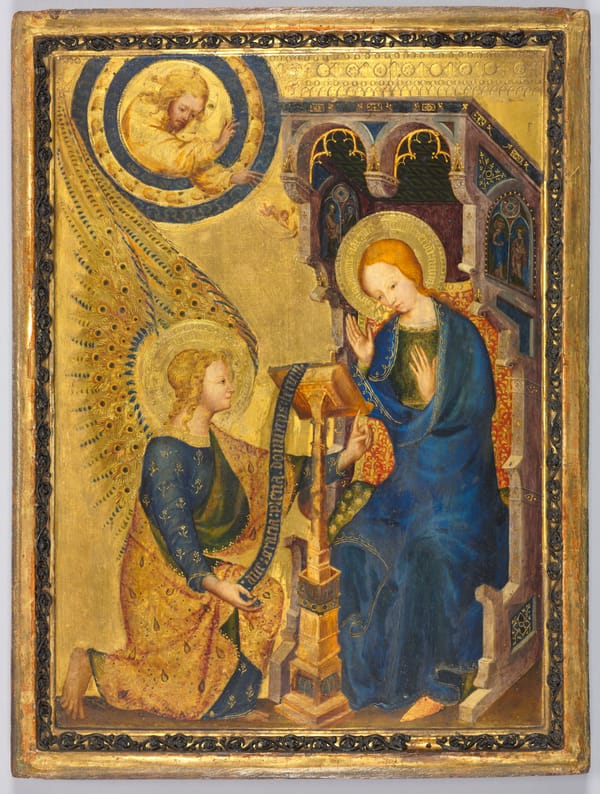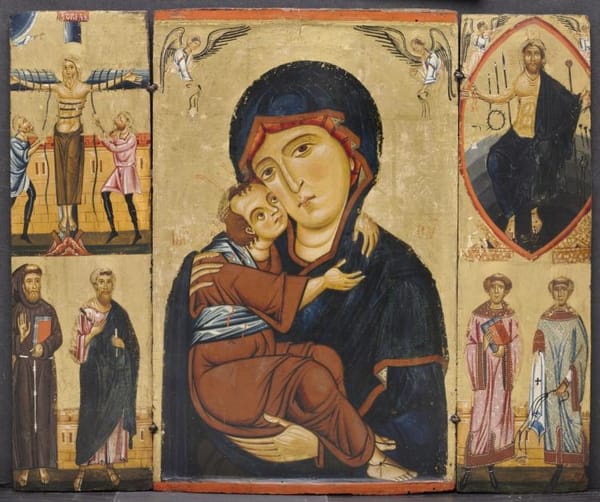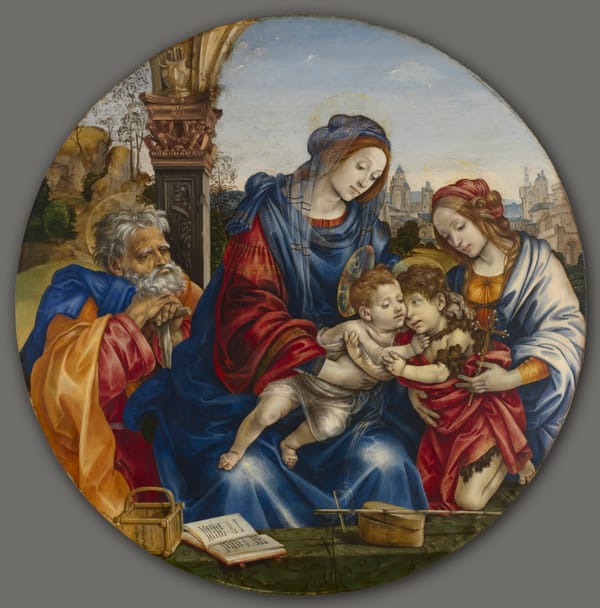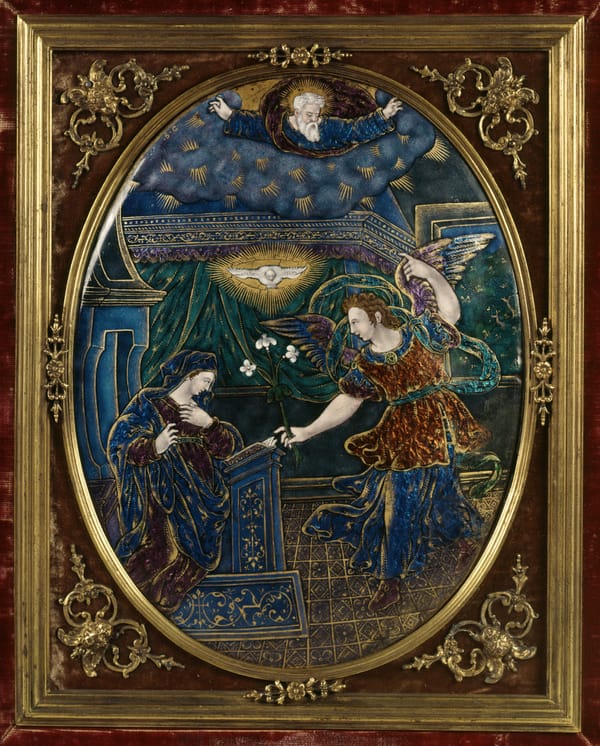Borne aloft by two angels, the Virgin is crowned Queen of Heaven by Christ, God the Father, and the Holy Spirit (in the form of a dove). Below, Joseph and Saint Francis of Assisi, displaying the stigmata on his open hands, kneel in reverence as they bear witness to the celestial ceremony. Swirling, shimmering, jewel-toned draperies enliven the composition and accentuate the otherworldliness of the subject. The naturalistic faces of the saints below contrast with the idealized features of the figures above, emphasizing the separation between heaven and earth. Though the painting is relatively small in size, it is apparently not a modello or study for a larger work—the use of a labor-intensive wooden support, along with the painting’s very elaborate finish, indicate that it was an autonomous work. Procaccini’s decision to paint this subject on such a small scale is unconventional—coronation scenes were more often painted as large-scale altarpieces—and necessitated the compression of figures into a tight space.
Procaccini’s beginnings were as a sculptor. The precise date of this painting is unknown but it is likely to originate from early in the artist’s career when he made the transition from sculpture to painting. The method of execution is revealing in this regard—the solidity of the figures, the sweeping arcs, and sharp edges that make up the drapery are reminiscent of carved marble. The inclusion of a landscape in the background of this scene is similarly supportive of an early date. The artist’s brother, Carlo Antonio Procaccini (1571 – 1630), was also a painter, and a specialist in Flemish-style landscape painting, and Procaccini collaborated with him at different points in his career. Apparently influenced by the work of his elder brother, Giulio’s early works also incorporate landscape elements.
Free Downloads Below
Hi-Res
1200px
800px
